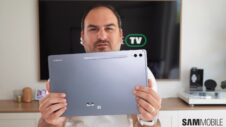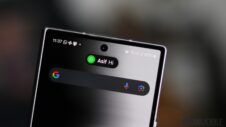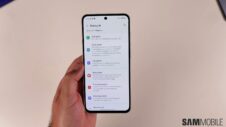Somewhat unexpectedly, Huawei has released its new Mate X3 foldable phone in Europe. This device, announced in March, was expected to remain exclusive to China, but the company is officially bringing it to the Old Continent, including the Netherlands. And as it turns out, the Huawei Mate X3 costs roughly as much as the Galaxy Z Fold 4 and Galaxy A54 combined.
The Mate X3 is Huawei's most premium foldable phone to date. It has a book-like form factor, which makes it a direct competitor to devices like the Galaxy Z Fold 4, the upcoming Galaxy Z Fold 5, and Google's first foldable phone, the Pixel Fold. But while the Galaxy Z Fold 4 went on sale for €1,799 — and is often found at discount prices — Huawei is trying to sell the Mate X3 for a whopping €2,200.
In other words, the Huawei Mate X3 costs almost as much as the Galaxy Z Fold 4 and the Galaxy A54 combined, or more if you find one of the two Samsung devices at a discount — and you often will.
What do you get in exchange for €2,200?
To Huawei's credit, it's worth noting that the company offers a free Watch GT3 smartwatch with the Mate X3 foldable. Whether or not the wearable is actually “free,” given the phone's exorbitant price, is debatable.
For reference, when bought separately, the Watch GT3 costs €189, which means that even if you account for the “free” smartwatch, the Mate X3 bundle still costs €211 more than the Galaxy Z Fold 4.
As for the foldable phone itself, it does have an IPX8 water resistance rating, similar to the Z Fold 4. And the raw internal hardware is competent, particularly the Snapdragon 8+ Gen 1 SoC, which the Z Fold 4 also has.
Nevertheless, the Huawei Mate X3 has some odd quirks. For example, it's a €2,200 phone that lacks 5G connectivity. And that famous 5,060mAh silicon carbon battery you may have heard about is reserved for China. Europeans get a Li-Po 4,800mAh unit. Still, it's 400mAh larger than the Z Fold 4's and has faster charging.
The Mate X3 has slightly larger screens than the Galaxy Z Fold 4, but they're dimmer. Huawei's phone can't record 8K videos, while the Z Fold 4 can.
Proprietary expandable memory formats are not as useful as you may think
Huawei's oddities continue. For example, the Mate X3 prides itself on expandable storage, but the latter is based on Huawei's proprietary Nano Memory (NM) technology. These memory cards are exclusive to Huawei phones and aren't very useful for customers who are planning to use the memory expansion slot to transfer files around. The NM format is mostly there to catch customers into a proprietary memory expansion technology only usable with other Huawei products.
And last but not least, Huawei doesn't have native access to the Google Play Store. Anyone who wants to install Android apps on the device will have to go through hoops and loops to achieve that. All in all, the Mate X3 is an odd, expensive device, and it arguably doesn't have all the comforts of a Samsung Galaxy phone or the same attention to detail.
Does the Huawei Mate X3 worth the price of a Galaxy Z Fold 4 and a Galaxy A54 combined? Probably not. It doesn't seem to be worth €211-€400 more than the Z Fold 4, either. Regardless of which phone enthusiasts might think is superior, the fact remains that book-like foldable devices have historically struggled with high prices. And the Mate X3 certainly doesn't seem to do anything to alleviate this issue.







